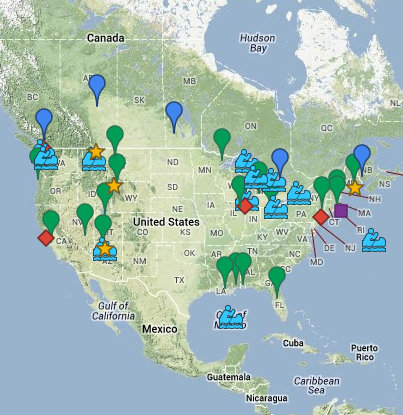The shore platform along parts of the western Strait of Juan de Fuca is etched with large arcuate features often 100's of meters across. I recall first seeing these in air photos decades ago and a number of colleagues have mentioned them over the years. This was my first chance to get out and see some of the better examples at a good low tide.
AERIAL VIEW
This happens to be a coastline marked by numerous large, deep-seated landslides and these arcs seem to be consistent with the offshore extension of many of these. The features consist of narrow ridges of boulders that curve out from the shoreline across a very broad, flat, and often fine grained erosional surface.
Boulder arcs have been described or show up in photos of coastal landslides in other parts of the world and I can think of one smaller example on Hood Canal (Termination Point), but I haven't seen a good discussion of the mechanism by which they form. Particle segregation can occur in large slides and debris flows. The slide may bulldoze large boulders as it moves. And there could be additional ways in which a boulder lag like this might be concentrated in this way.
This would be a fun topic to discuss further, but I've got neither the time nor the knowledge to do with this well. But it was great to actually see them up close and it was fun to participate in a discussion of how they might have been created and whether they might have been used, or even modified, by Native Americans.
Wednesday, August 08, 2018
Subscribe to:
Post Comments (Atom)





No comments:
Post a Comment